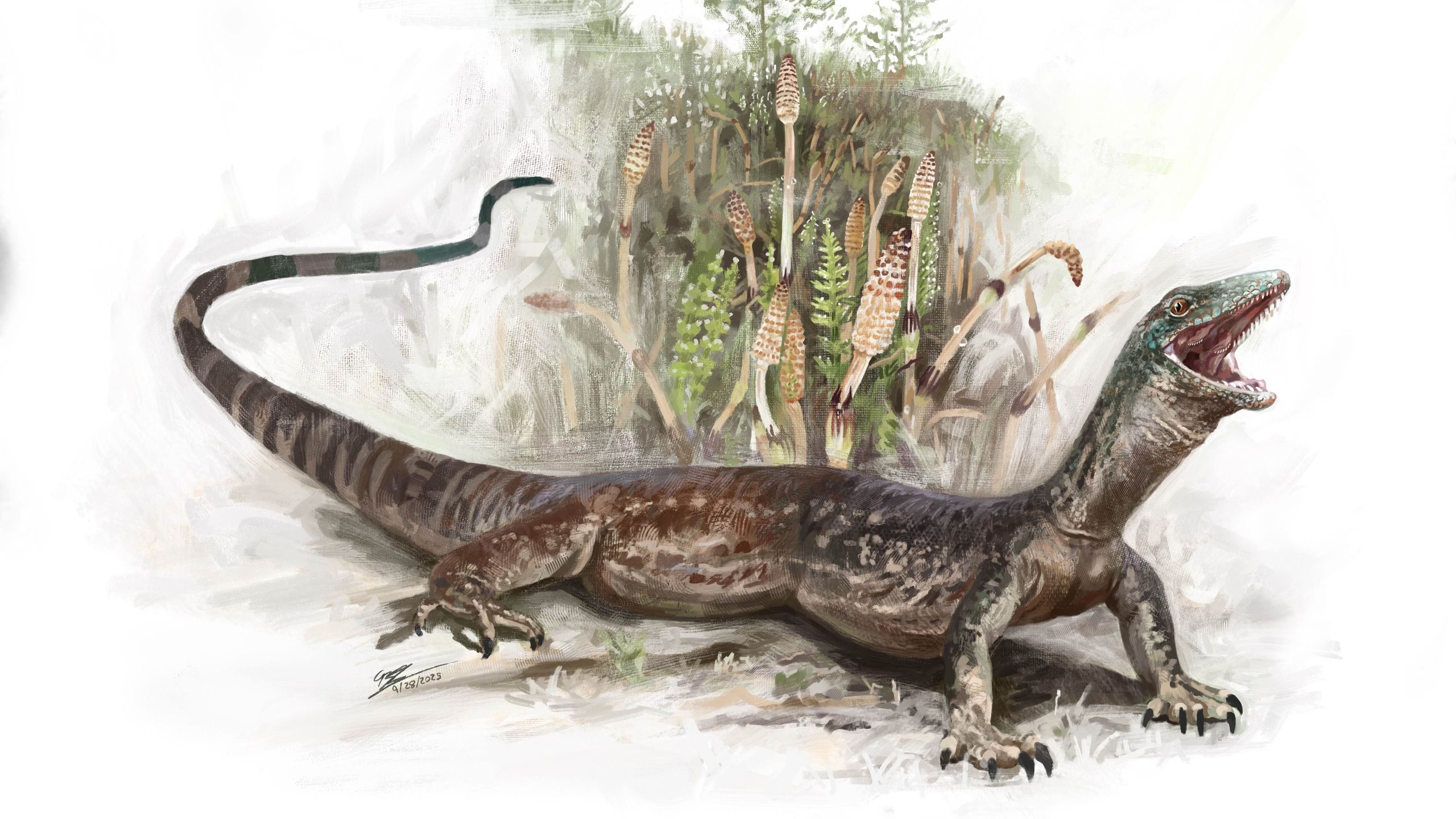Unbelievable Discovery: The 'False Snake' That Predates Dinosaurs Revealed!

Imagine stumbling upon a creature that blurs the lines between lizards and snakes, a fossil from 167 million years ago that could change everything we know about reptilian evolution. Welcome to the incredible world of Breugnathair elgolensis, or as it’s more commonly known, the ‘false snake of Elgol.’ This astounding find was unearthed near the picturesque village of Elgol on Scotland's Isle of Skye, and it has left scientists buzzing with excitement.
The fossilized skeleton of this Jurassic reptile, akin to a bizarre fusion of a lizard and a snake, was detailed in a groundbreaking study published in the journal Nature on October 1. The name Breugnathair elgolensis is a nod to its perplexing anatomy and the Elgol region itself, where this fossil treasure was discovered.
Measuring about 16 inches (41 centimeters) long, this little predator was a heavyweight in its ecosystem, suggesting it had a diet that included smaller lizards, early mammals, and even hatchlings of herbivorous dinosaurs. Can you picture this creature with its snake-like jaw and curved teeth, reminiscent of a modern python, hunting its prey with agility? What’s even more mind-boggling is its combination of short limbs like a lizard and gecko-like features on its skull, making it a fascinating puzzle in the evolutionary timeline.
As researchers delve into the evolutionary history of Breugnathair elgolensis, they realize that its discovery may redefine our understanding of how snakes evolved. The lineage of lizards and snakes, grouped under Squamata, has always been a bit of a mystery, emerging around 190 million years ago. Scientists agree that lizards predate snakes, usually sporting four limbs while their limbless cousins evolved later. However, the presence of both lizard and snake features in this new species throws a wrench in previously held beliefs.
According to Professor Susan Evans, co-lead author of the study, “The Jurassic fossil deposits on the Isle of Skye are of world importance for our understanding of the early evolution of many living groups, including lizards.” This discovery does more than just add another name to the reptilian family tree; it opens up fresh avenues for research into how these fascinating creatures diversified.
Interestingly, the fossil was initially discovered in 2015 by Stig Walsh, a senior curator at the National Museums Scotland. After nearly a decade of meticulous analysis, including high-powered X-rays and CT scans, scientists concluded that B. elgolensis belongs to a lesser-known subgroup of Squamata called Parviraptoridae. Previously, only fragments of this lineage were known, and the realization that one species could possess both snake and gecko traits is a significant leap in paleontological understanding.
As Evans reflects, “It’s a bit like finding the top of the jigsaw box many years after you puzzled out the original picture from a handful of pieces.” This new specimen provides a crucial reminder that evolution isn’t always a straight line; sometimes it resembles a wild maze full of unexpected turns.
Scientists still grapple with whether this ancient species is a direct ancestor of modern snakes or if it independently developed similar traits. Regardless, Breugnathair elgolensis adds a captivating chapter to the story of reptilian evolution, a story that continues to unfold with each new fossil discovery.


















